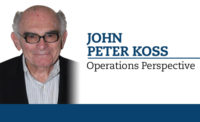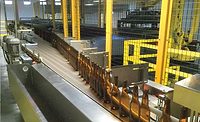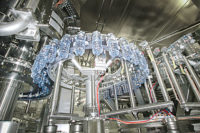Understanding the total costs of fleet ownership
Using similar comparisons important when evaluating beverage fleets

The old TV commercial where the oil filter technician said “You can pay me now or pay me later,” implies that saving a little money up-front
might cost much more in the long run. This advice applies on a much larger scale when considering the acquisition of new vehicles. If one only considers the up-front acquisition costs, a shortsighted choice can lead to significantly higher costs during the life of a vehicle.
Comparing the time to break even for various equipment options on an otherwise identical truck is a common form of cost analysis, but limiting this comparison to the direct costs and benefits of an option might not provide the entire story.
By analyzing total cost of ownership (TCO), it’s possible to make a much more accurate comparison. TCO analysis takes into account the total cash flow associated with the total life of an asset. A TCO-based analysis can help make a decision of whether it is more cost effective to replace, rebuild or change component specifications on a vehicle.
One of the key benefits of TCO-based analysis is the ability to optimize vehicle replacement cycles. Without a good cost analysis in hand, it’s possible to replace vehicles too soon, which will drive up capital expenses. Conversely, if replacement schedules are stretched too far, it’s likely to incur unnecessary maintenance costs, spending money that could otherwise be applied to the cost of a replacement vehicle.
Even though some of the more complex aspects of cost analysis might fall into the realm of the company’s financial executives, the process won’t even get off the ground without highly detailed fleet operating records coming from the fleet management team. Failure to track all costs of ownership during the life of the vehicle will not produce sufficient information to make informed decisions on vehicle specifications and acquisitions.
To perform an effective cost comparison, one must define and limit the variables to be compared.
For example, when making the comparison between an alternative-fuel powertrain truck and a conventional powertrain truck, both trucks should be spec’ed for similar or identical operating conditions with similar routes and similar loads.
When a comparison is being made between different truck configurations, such as a straight truck equipped with a side-load body versus a tractor with one or more dry-van trailers, it’s important to include all costs of ownership during the vehicle’s entire lifecycle.
A tractor with two trailers will cost more to acquire than a single straight truck; however, the tractor-trailer’s ability to cover two routes during back-to-back shifts with a single power unit means that most fixed costs (federal excise taxes, highway use tax, registration fees, etc.) will get amortized across a higher volume of delivery. In this example, it’s also necessary to consider the product volume delivered when making the cost comparison.
When comparing options, it’s also critical to consider the driver’s potential impact on operating costs. Studies have shown that driving behavior can affect fuel economy by as much as a 30 percent in otherwise identical operating conditions. The importance of this is three-fold with respect to total cost analysis.
First, when measuring fuel economy, it’s best to use the same driver, or a sufficiently large pool of drivers, when testing the options being considered. This will help to mitigate the variable of driving skill levels that easily could exceed or obscure the variables being compared.
Second, because the driver can have a large impact on operating costs, money invested in driver comfort and convenience features has the real potential to deliver bottom-line savings through improved fuel economy. In route delivery operations, driving behavior also can have a significant impact on tire, maintenance and repair costs.
Third, beware of additives or gadgets marketed with fuel economy claims based solely on the vendor’s own road testing. Legitimate fuel economy test claims should be backed with the Society of Automotive Engineers Type II testing standards performed by an independent laboratory.
Although comparing vastly different vehicle configurations can yield some impressive cost differences, the comparison of incremental vehicle spec changes is where TCO analysis really shows its value.
Big differences can be spotted without much help, but with many spec choices, it’s a game of inches, and TCO can help identify enough savings over time to accumulate a substantial gain.
It’s important to understand, however, that a productivity gain must be significant enough to impact operations.
For example, consider a truck that averages four deliveries in eight hours. If a new truck will save 15 minutes for each delivery, the total time savings will be one hour a day. Because this is less than the average time needed to make a delivery, the savings probably will result in just more free time for the driver as opposed to increasing actual delivery productivity. Even if the time saved is significant enough to make another delivery, if the truck already is loaded to capacity at four deliveries a day, there’s still no gain in productivity.
Financial considerations, including tax rates, interest rates and depreciation schedules, also can affect the total cost equation. When comparing purely operational concerns doesn’t provide a conclusive answer, the financial variables can make or break the case for the options under consideration.
Looking for a reprint of this article?
From high-res PDFs to custom plaques, order your copy today!






